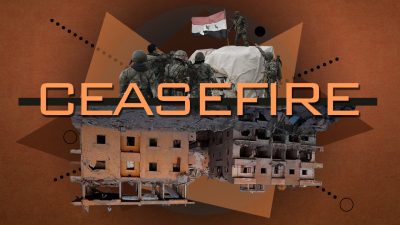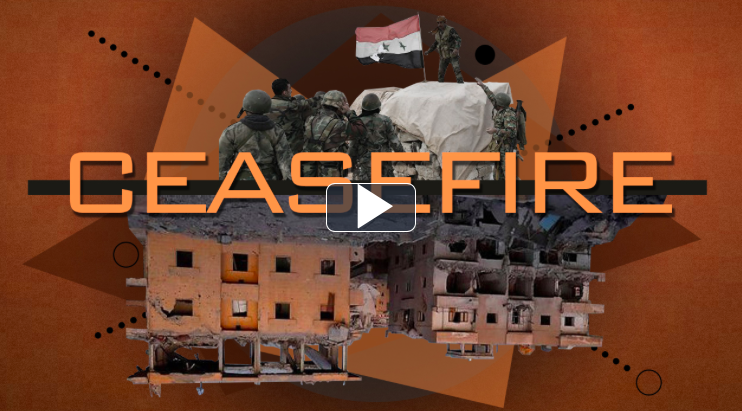Video: Assad Troops Deploy on Border Amid 120-hour Ceasefire

On October 16 and 17, the Russian Aerospace Forces were conducting airstrikes on positions of Hayat Tahrir al-Sham in northern Lattakia and southern Idlib. According to local sources, the most intense strikes took place near Tahtaya, Kafar Sijnah and Rakaya Sijneh.
After Turkey’s Operation Peace Spring started in northeastern Syria on October 9, Idlib militant groups carried out several attacks on positions of the Syrian Army in the southern part of the de-escalation zone. Most likely, militants believed that the Turkish incursion into Syria would draw attention of the Syrian Army and allow Hayat Tahrir al-Sham to capture at least several villages in southern Idlib.
The Syrian Air Force and the Russian Aerospace Forces responded to these attempts with precise strikes on positions of radicals.
ISIS is another group that decided to take some advantage of the Turkish actions. On October 17, the terrorist group announced that its units had freed a an unspecified number of women affiliated with the group from a HQ of the Kurdish-led Syrian Democratic Forces (SDF) in the village of Mahmudli in western Raqqa.
According to the Russian Defense Ministry, about 14,650 ISIS members remain in 7 detention camps in the area controlled by the SDF. Additionally, there are 8 camps for displaced persons, including relatives of ISIS terrorists. The number of people kept in these camps may reach 120,000.
Turkey’s Defense Minister Hulusi Akar warned that “terrorist groups” (i.e. Kurdish militias) are planning to stage a chemical weapons provocation to accuse the Turkish Army of using chemical weapons in northeastern Syria. In previous years, Ankara repeatedly accused the Damascus government of conducting chemical attacks. In those cases, Turkey was not very interested in talking about some terrorists’ involvement or ‘preplanned staged attacks’.
Turkish-led forces continue their advance along about 120km long chunk of the border. Especially intense fighting is ongoing in the town of Ras al-Ayn, a part of which still remains contested.
The deployment of the Syrian Army around these area is aimed at preventing a further advance by Turkish-led forces. Just recently, the SDF handed over the Kobani border crossing to government troops. Therefore, if the SDF-Damascus deal is implemented, the Turkish presence will be limited to the border area from Tell Abyad to Ras al-Ayn.
On October 17, the US and Turkey agreed on a temporary ceasefire in northeastern Syria. According to the agreement, Kurdish forces have to withdraw from the 32km-deep area within 120 hours. If this is done, the Turkish military operation will not be resumed.
*
Note to readers: please click the share buttons above or below. Forward this article to your email lists. Crosspost on your blog site, internet forums. etc.
We call upon Global Research readers to support South Front in its endeavors.
If you’re able, and if you like our content and approach, please support the project. Our work wouldn’t be possible without your help: PayPal: [email protected] or via: http://southfront.org/donate/ or via: https://www.patreon.com/southfront


